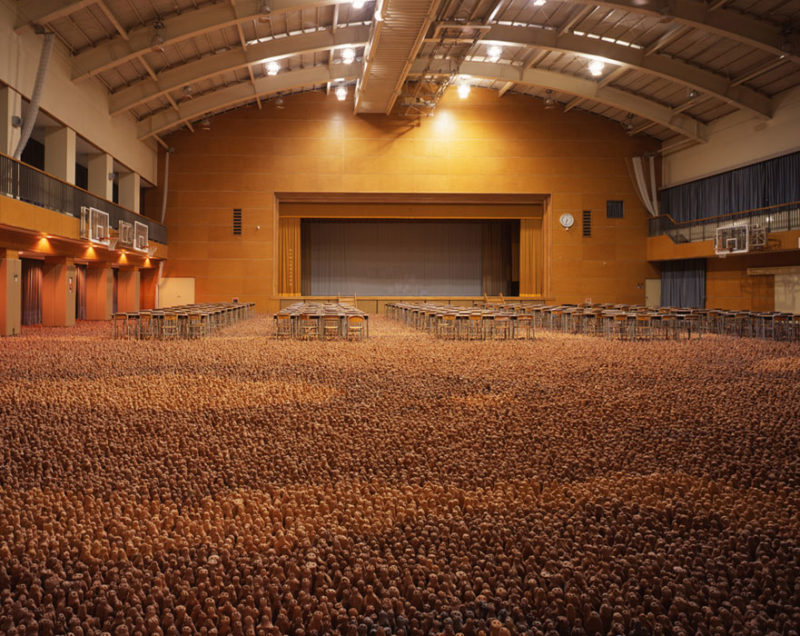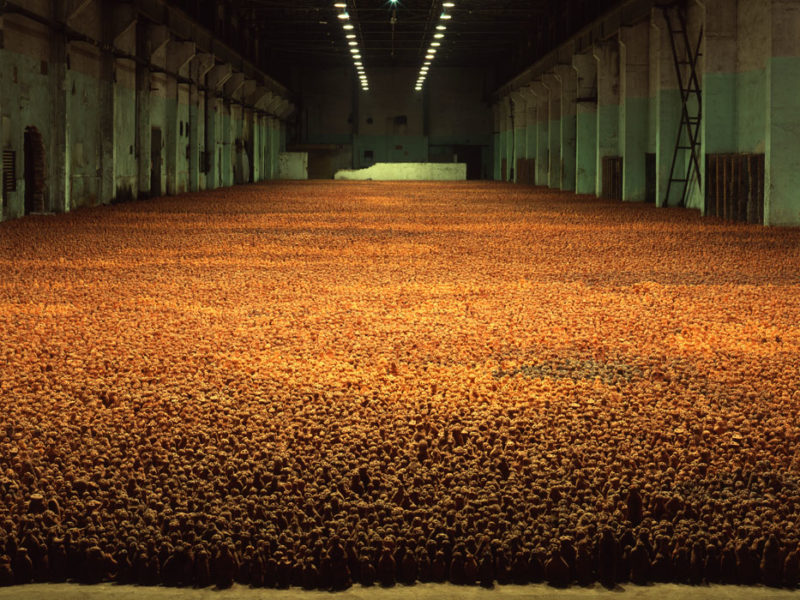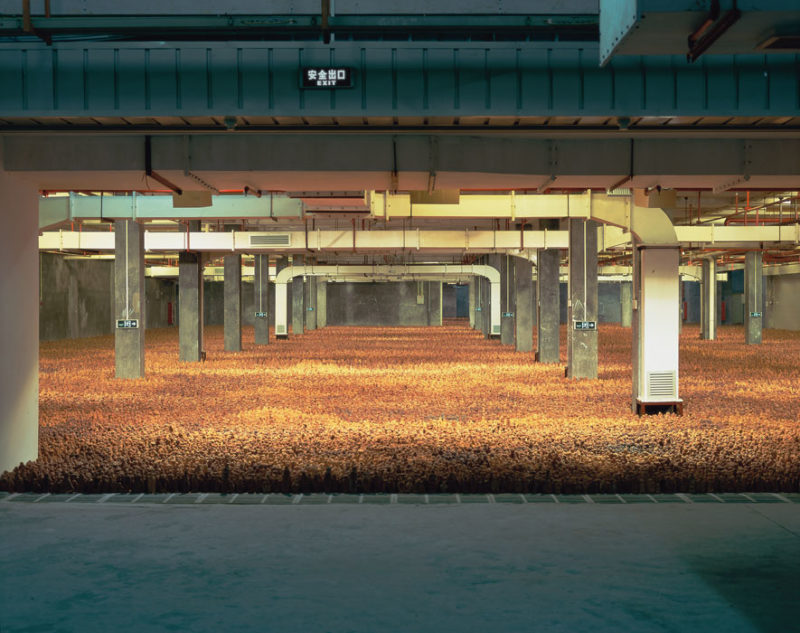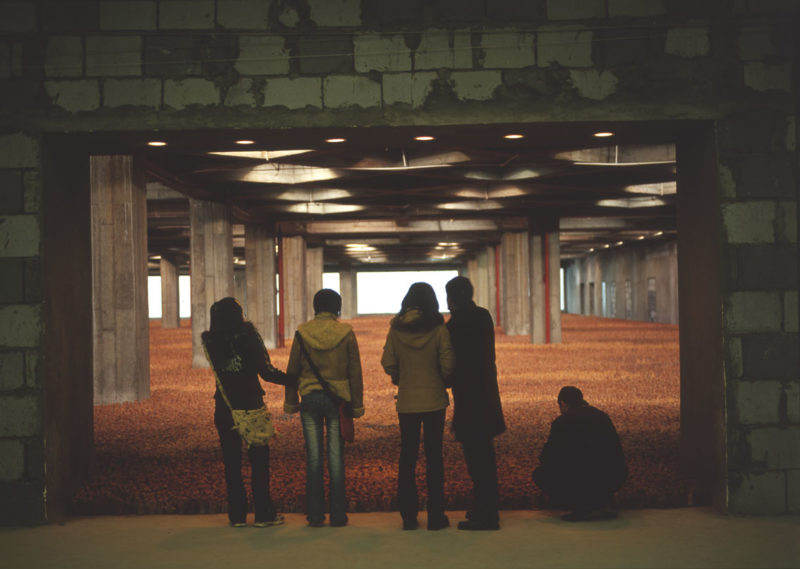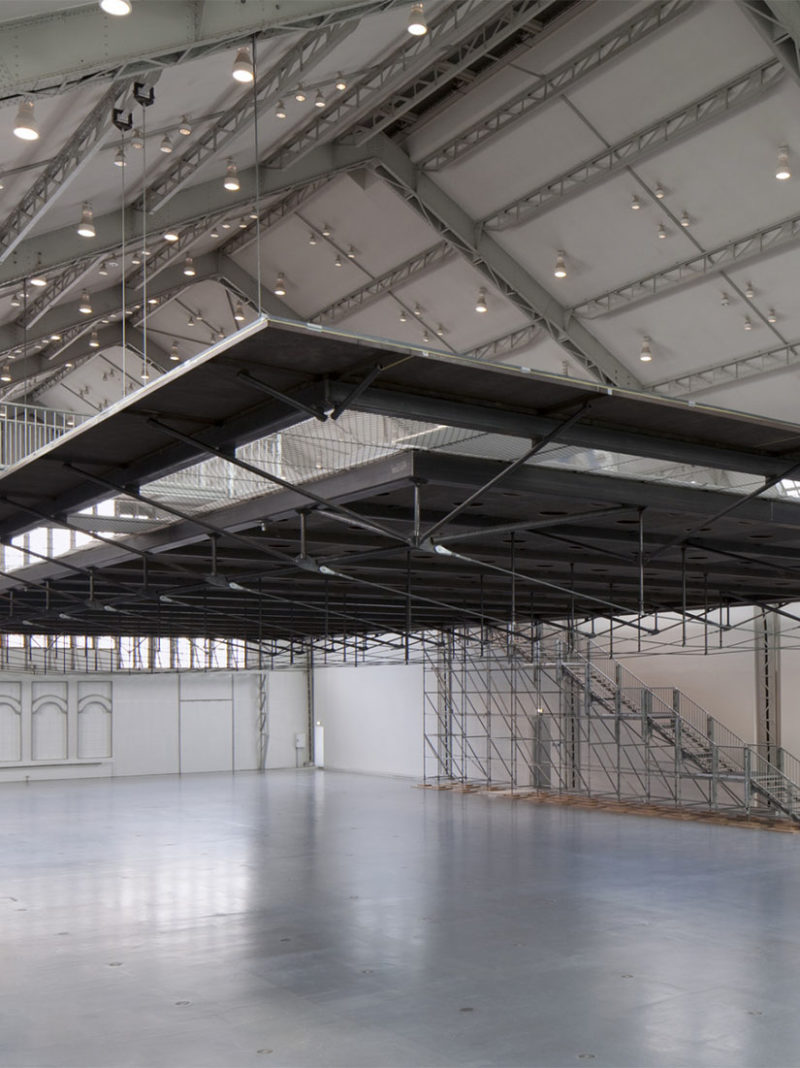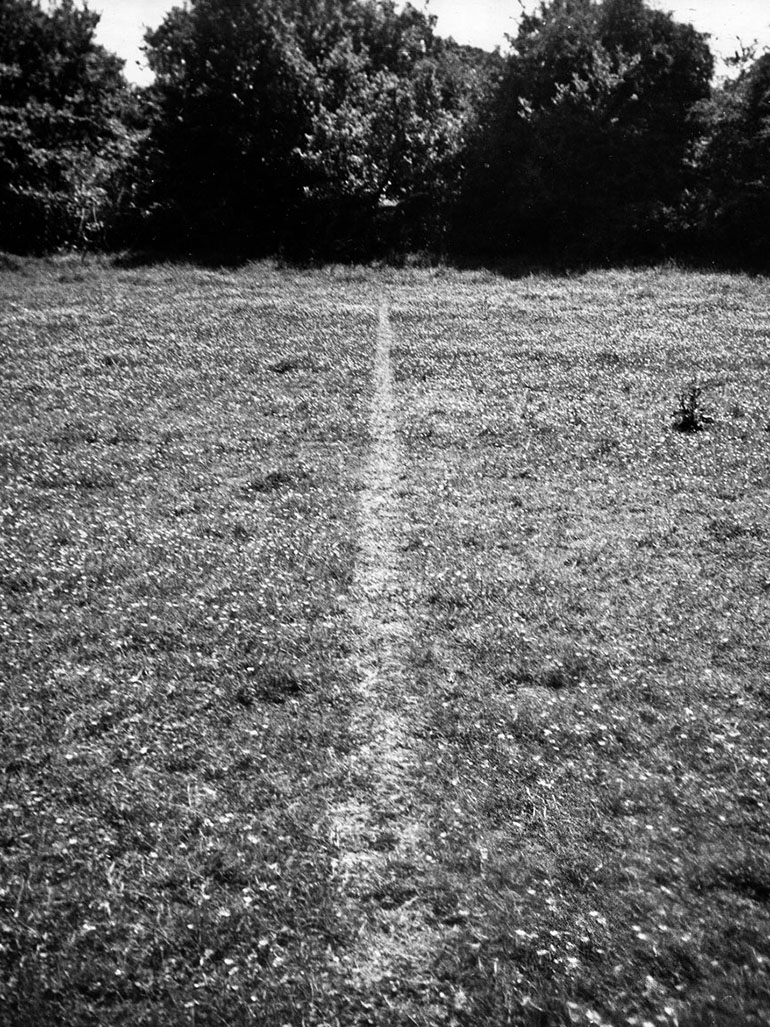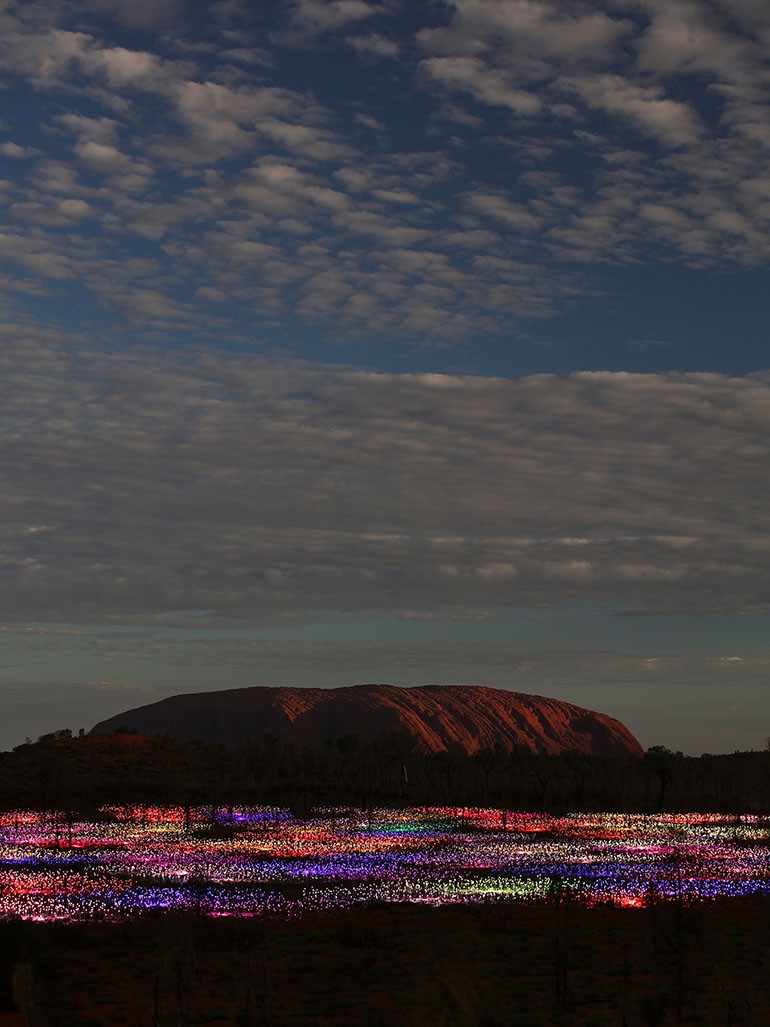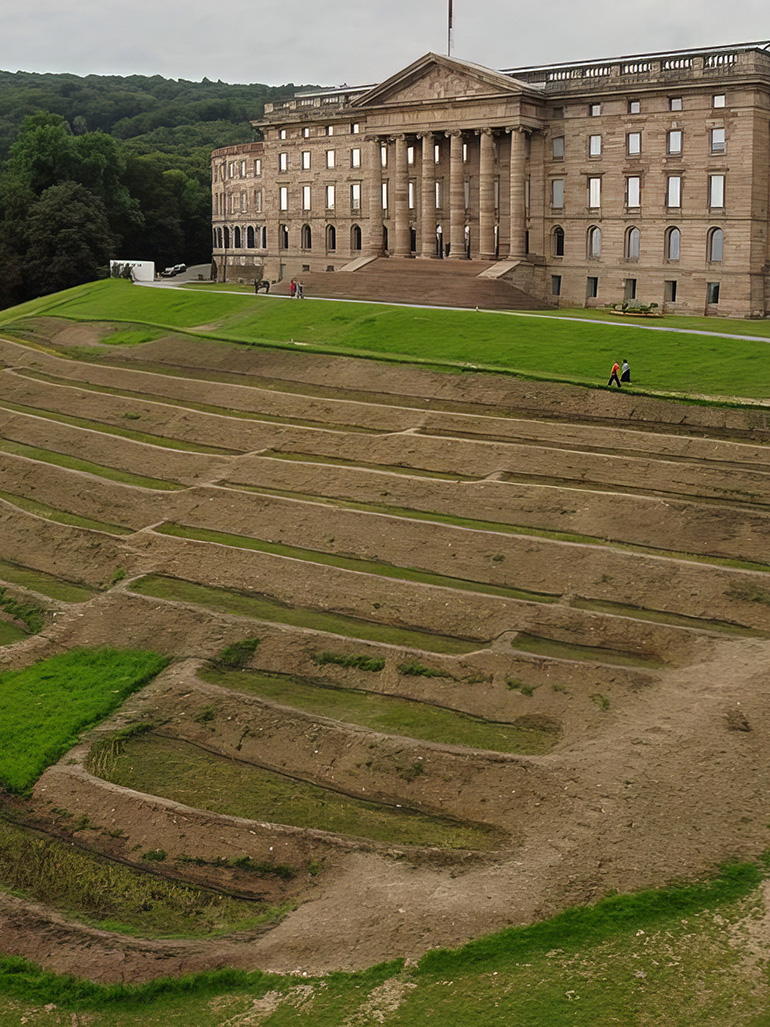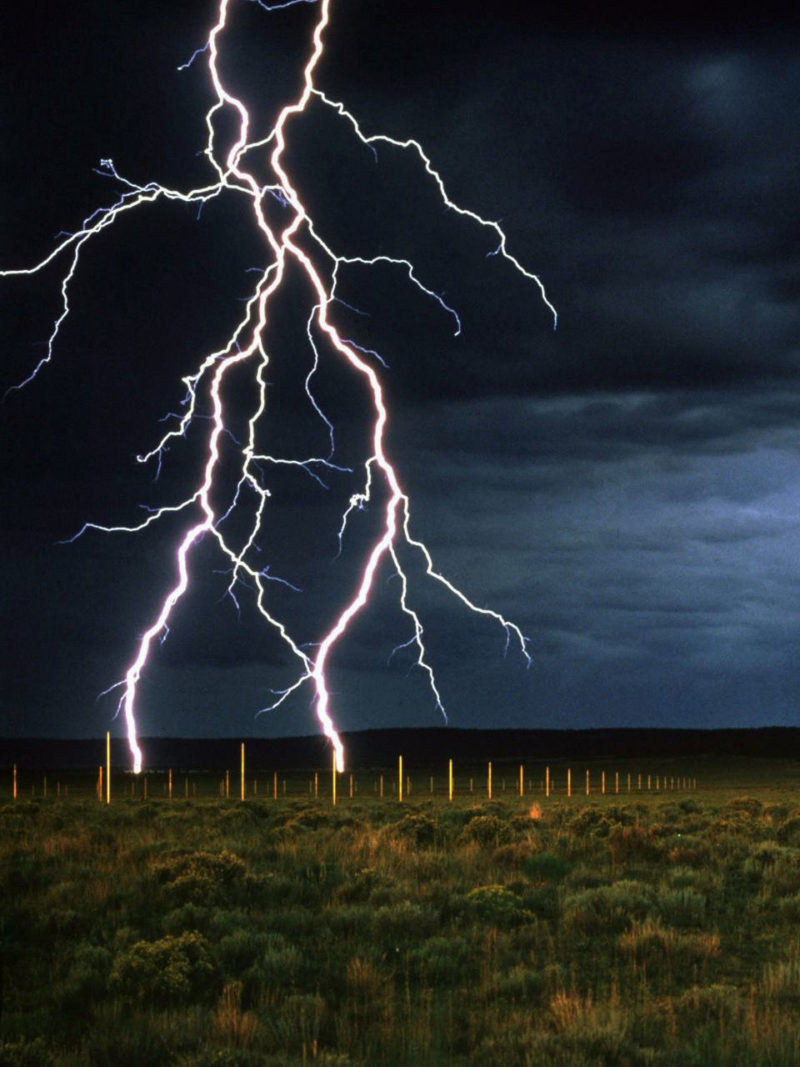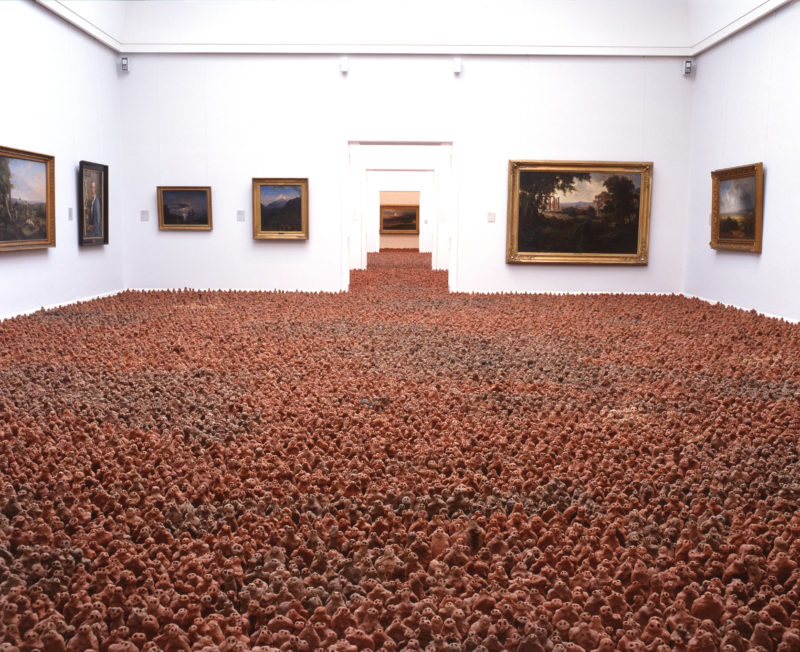
Antony Gormley’s Fields
British artist Antony Gormley 1 is well known for his life-size statues 2 which mimic the human body. His Field series, however, represents a different approach. Each work consisted of a couple of ten thousands of small soil figures to up to 210,000 used in his latest piece of the series, Asian Field, 2003. Each of them is between 8 and 26 cm high. They are all installed on the floor of a room facing the viewer.
Field for the British Isles (1993) won the artist the Turner Prize 3 in 1994, and a year later, it was purchased for the Arts Council Collection and is among the Collection’s most ambitious acquisitions to date.
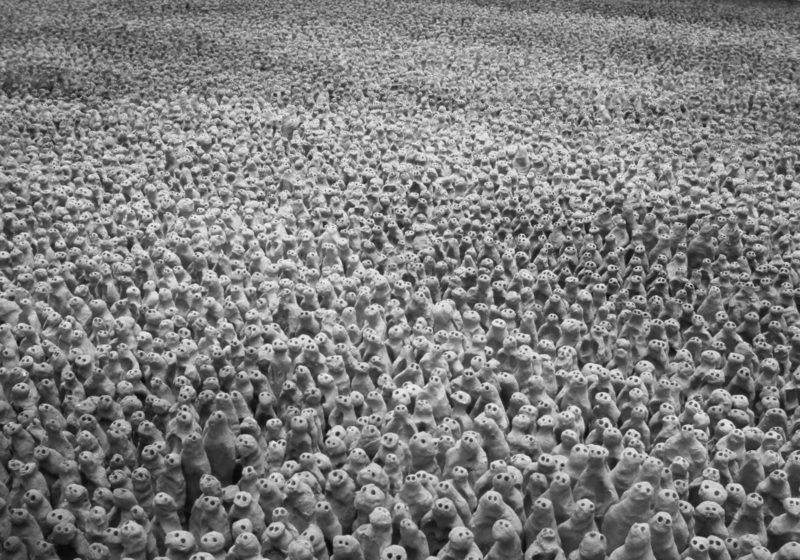
Different Fields
Between 1933 and 2003, Gormley created these five fields:
| Artwork | Year |
|---|---|
| Field (American) | 1991 |
| Amazonian Field | 1992 |
| European Field | 1993 |
| Field for the British Isles | 1993 |
| Asian Field | 2003 |
The process
To create the sculptures, Gormley needed a huge team of people. Each person was provided with a board on which to place a lump of soil, a small water container, and a pencil to create the eye holes. They were also offered a cushion to sit on as well as sufficient floor-space. That made it easier to arrange the figures in rows of ten for easy counting.
Every participant was encouraged to find their own unique way of making the figure. They were asked to meet the requirements, which were that each miniature sculpture should be hand-size and easy to hold, the eyes deep and close, as well as the proportions of the head to the body should be approximately the same. The volunteers were basically asked to design a head and body, flatten the base for comfortable standing, and then make it conscious by giving it eyes using a sharpened pencil.
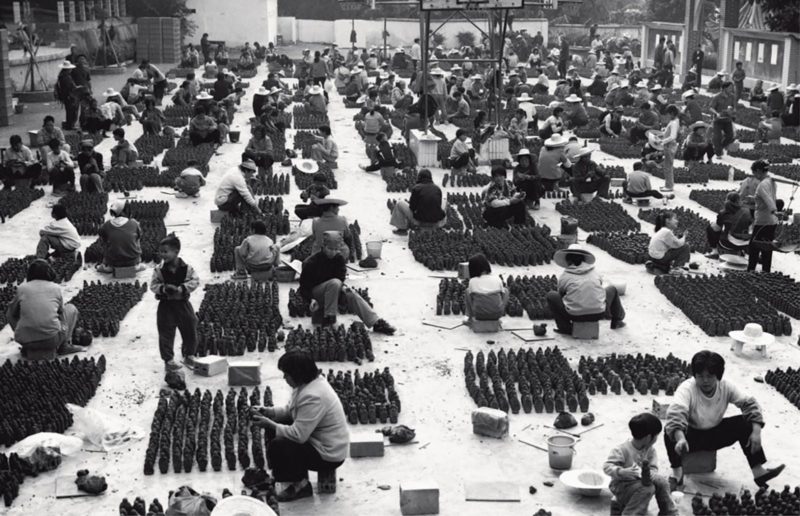
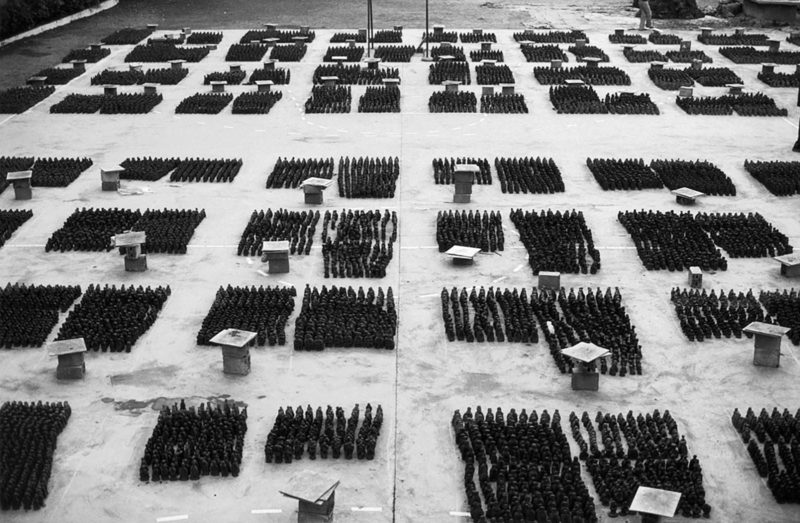
Requirements
- The pieces should be hand-sized and easy to hold.
- The eyes should be deep and close.
- The proportion of the head to the body should be correct.
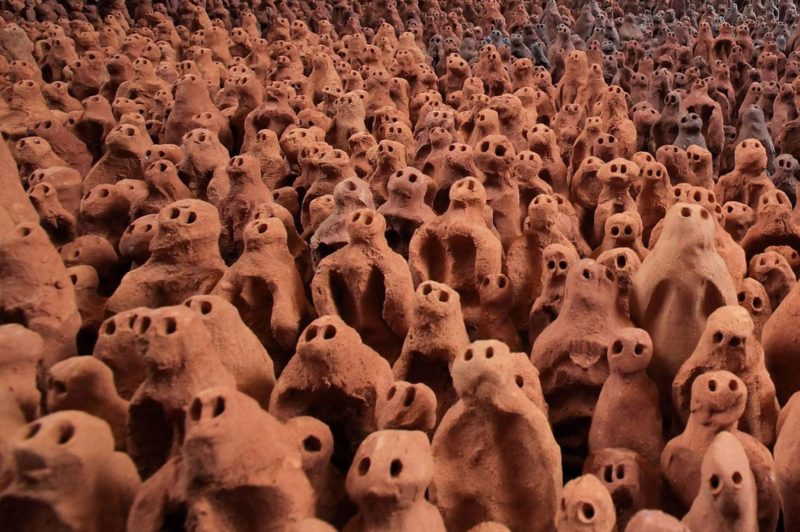
Analysis
Gormley states that he wanted to make a work about the human collective future and responsibility for it. His artwork aimed to look back on its makers and the viewers as if they are all responsible for the world.
That repeated action of taking a hand-sized ball of clay, squeezing it between your hands, standing it up and giving it consciousness becomes meditative; the repeated action becomes almost like breathing, or a heartbeat.
The concept of Field is simple. The artists used a straightforward incentive to get the public to participate in making the figures – produce many tiny figures and make them lively by giving them eyes so that they can look back at the audience (us). This made the installation grow bigger and more powerful wherever it traveled. The last one, Asian Field, 2003, containing 210,000 bodies, compared to the first installation, 35,000 bodies. The only moral interpretation of Field – if it even has – is that it reminds the audience that they are active makers, the agents of the future.
From the beginning, I was trying to make something as direct as possible with clay: the earth. I wanted to work with people and to make a work about our collective future and our responsibility for it. I wanted the art to look back at us, its makers (and later viewers), as if we were responsible –responsible for the world that it [Field] and we were in. I have made it – with help – five times in different parts of the world.
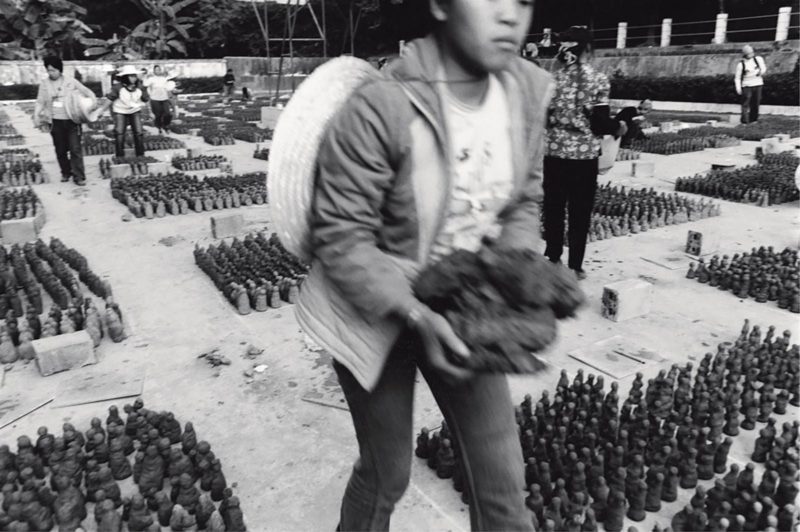
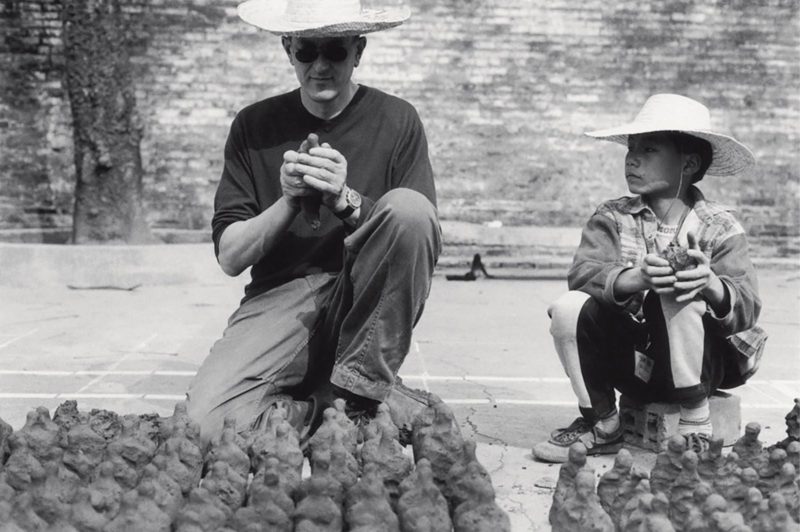
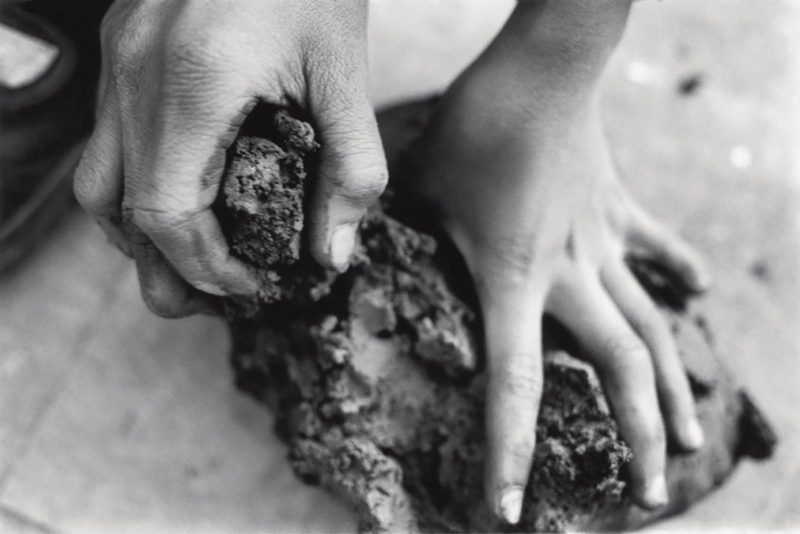
Video: Gormley speaks about Field For The British Isles
3 min 42 sec
American Field
American Field
American Field consists of approximately 35,000 individual terracotta figures between 8 and 26 cm each, installed on the floor of a room facing the audience. American Field has been installed and exhibited at various locations, with the configuration changing to suit each venue. Still, the tiny figures are always placed to form a thick carpet, with each miniature sculpture facing towards the viewer. Ideally, the field is extended through the entryway or around the corner so that the figures create the impression of an infinite horde.
The figures were made in Cholula, Mexico 4, by over 60 members of the Texca family of brick makers under the close supervision of Antony Gormley himself. American Field received massive media attention when it was first displayed, and many affectionate imitations. After the success of the American Field, the artist proceeded to create other versions of the Field.
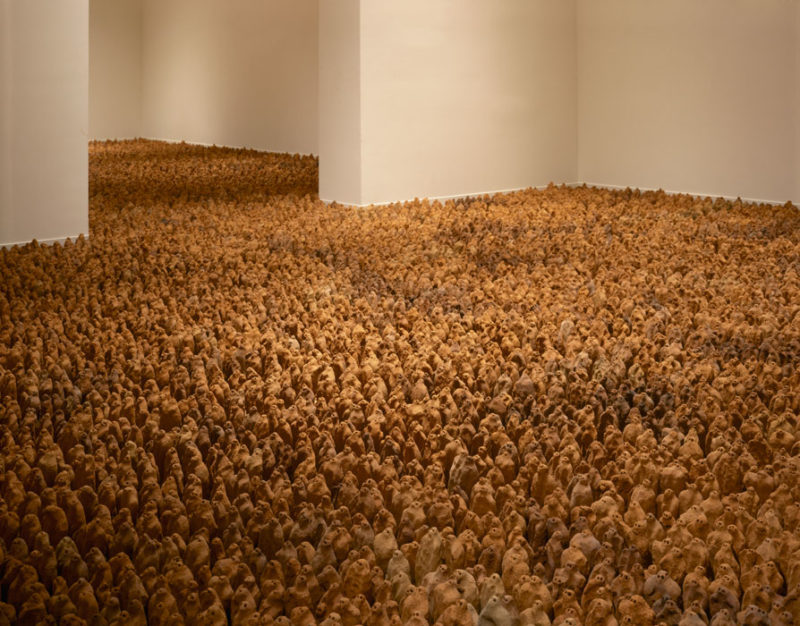
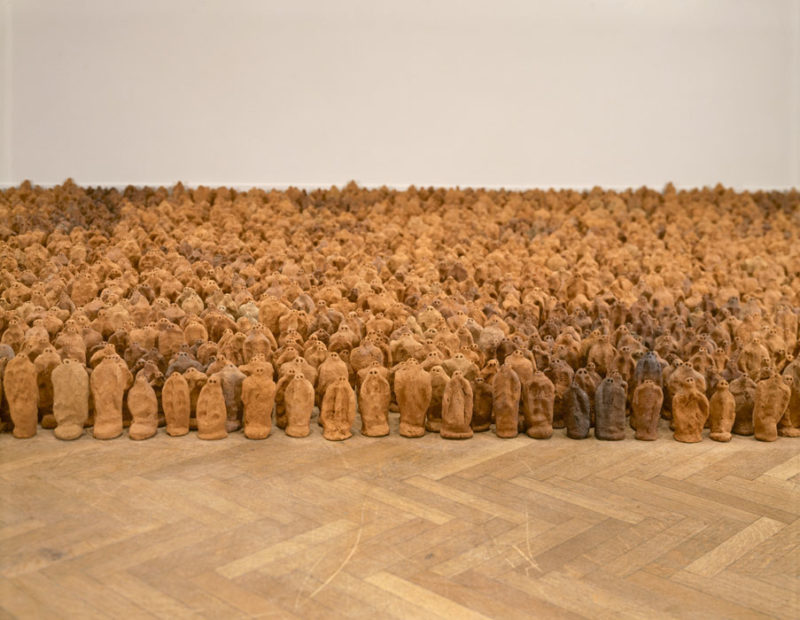
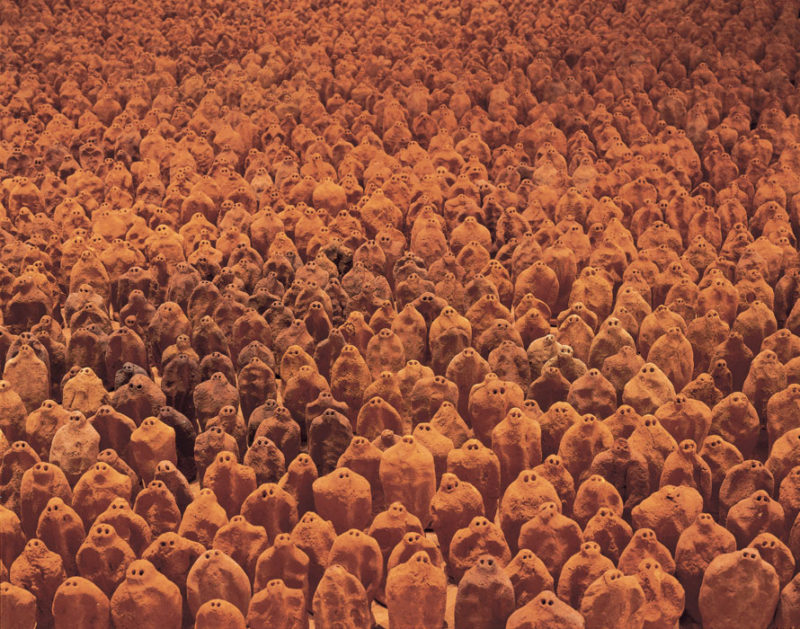
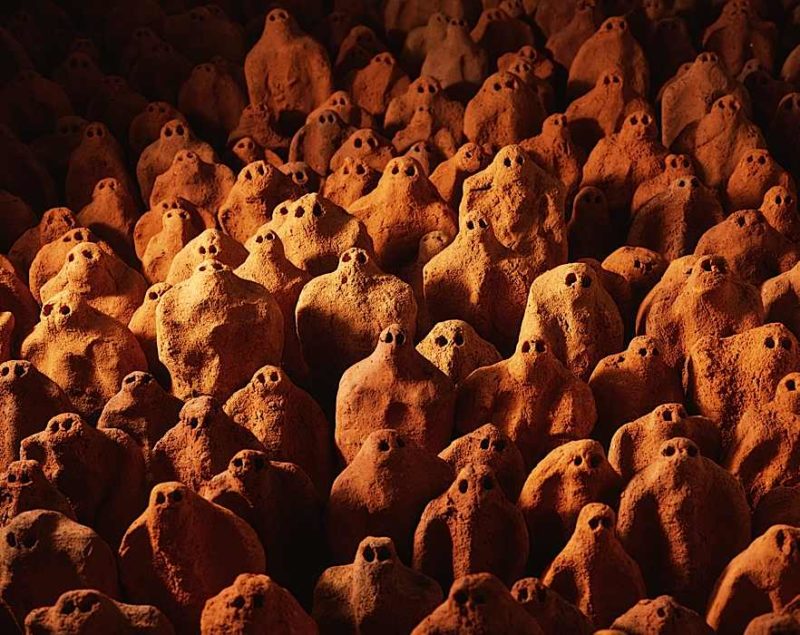
Antony Gormley – Amazonian Field, 1992
Amazonian Field was made in Porto Velho, Brazil, and is made of approximately 24,000 figures. The artist described this sculpture as an occupation of sculptural space by the powerless – the numerous dumb, mute, unformed clay miniature figures that make up this sculpture. According to the artist, Amazonian Field is an attempt to focus on human agency and the real ability we have to control our future.
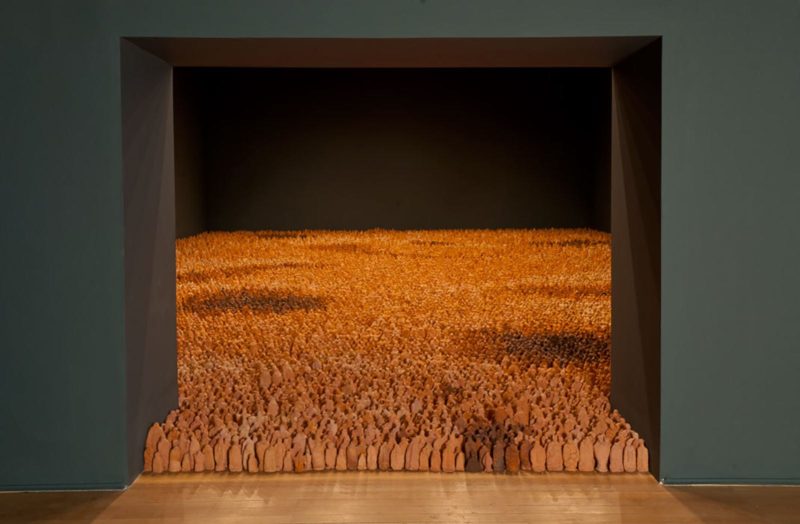
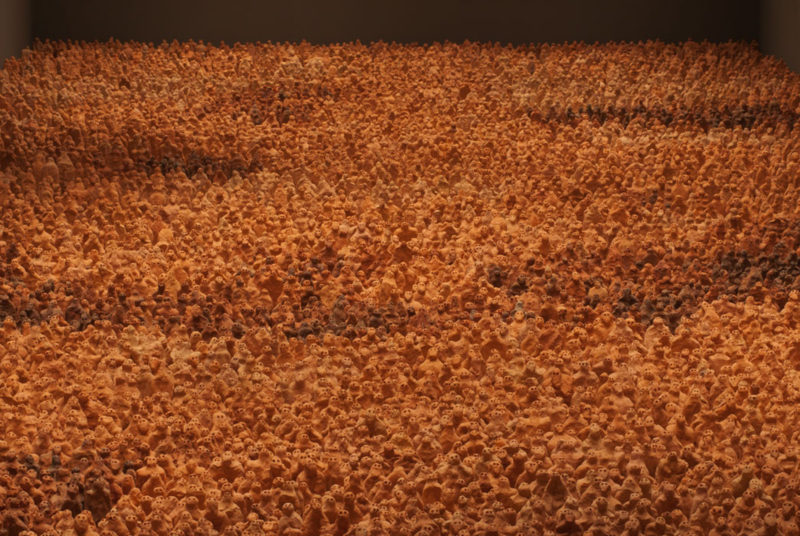
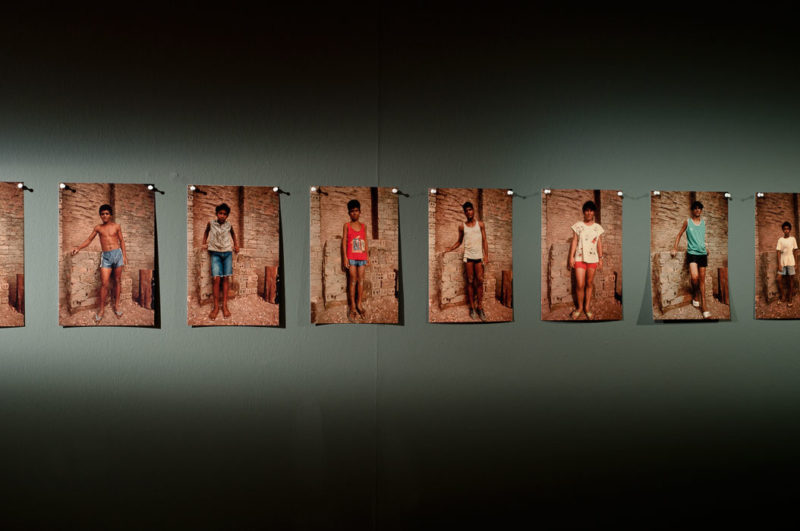
Video: Making of
5 min 17 sec
European Field, 1993
Video: Making of
European Field, 1993
This version of the field was created in 1993 in Östra Grevie, Sweden, and comprises approximately 40,000 terracotta figures made from clay from Smaland, Sweden. It is installed in a specially renovated byre. As it simultaneously conjures the ancient ancestors and the unborn, this installation converses the standard economy of observation, making the audience the subject of its gaze.
The artist deliberately made this installation uncomfortable so that the viewer is cast as the main character who has subconsciously walked onto a stage and now faces an audience that seems to ask: Who are you? What are you? What kind of world are you making? European Field is presented by 12 complementary drawings, such as Two Beings Doubtful made of earth, oil, and carbon.
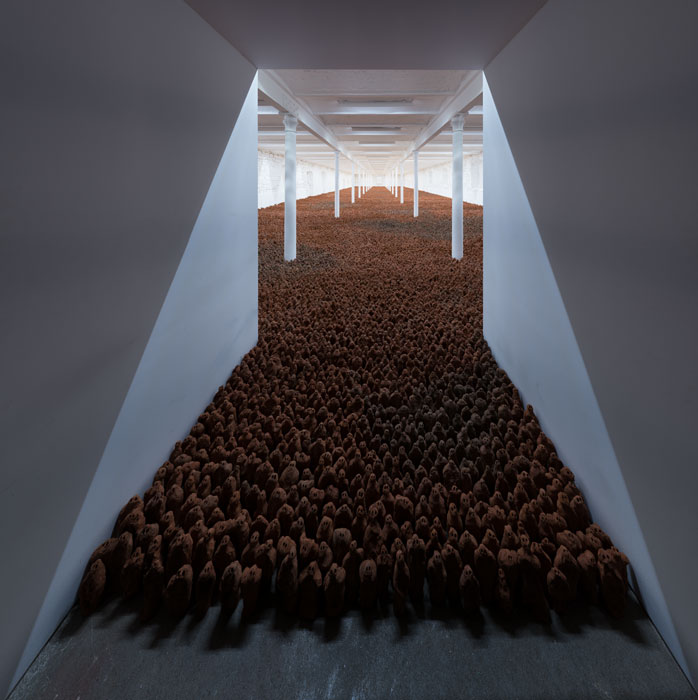
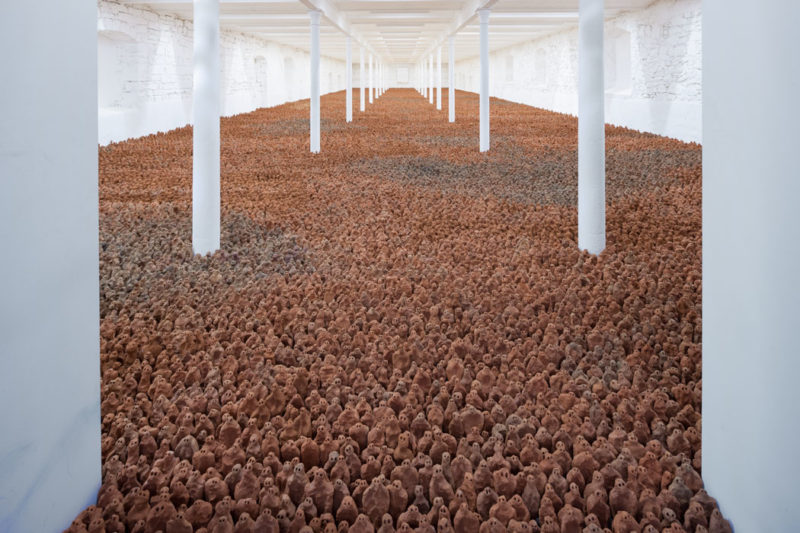
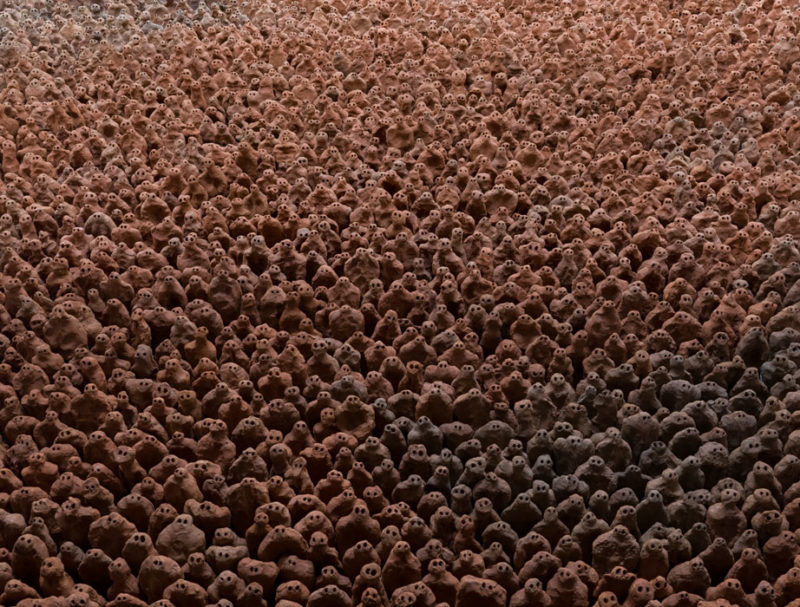
Field for the British Isles, 1993
Field for the British Isles comprises around 35,000 small figures. Each one is distinct and simply designed, with holes for the eyes. The figures completely occupy the floor in which they are placed, filling the space so that the viewer cannot enter the space the figures occupy, but they can view to the end of the space.
To make the Field for British Isle, he needed approximately 30 tons of clay. For this reason, he approached the Ibstock factory and asked to provide the clay. This brickmaking company in St. Helens has never got such a request but agreed to provide their expertise.
All the people were supposed to be ready to commence the work at 9.00 and end the day at 17.00. Each day, two workers started by cutting and distributing large lumps of clay. They used wheelbarrows and trolleys to meet the great demand. After that, every person settled into their own rhythm of working. With time, all of them got used to what is required of them. Confidence also grew with each additional row of figures. The two main workers also conducted a census at the end of every single day. The main objective of this census was to total the number of figures from individual contributors.
Most of the volunteers didn’t have a clear picture of what the whole idea was about, but as the day’s elapsed, most of them started getting insights into what the whole idea was about. After five days, the whole school was populated by 40,000 figures. The whole group was left with an intense feeling of satisfaction inspired by the achievement and the quality of the experience.
Just like other versions of Field, the installation was sited in a manner that there is only a single point of view for the audience. The dimensions of the viewing point were usually equivalent to no less than a sixth of the total area of the floor where the figure lies.
To create this installation, Antony Gormely teamed up with Tate Liverpool 5 alongside the pupils from two schools in St. Helens in Merseyside – Sutton Community High and Sherdley County Primary – as well as their families living in the area. This collaborative aspect was a signature style of Gormley in all his Field pieces.
The creation of Field for the British Isles needed the efforts of about a hundred people and a week to complete. People committed themselves to make the tiny figures for the full five days of the week. The minimum involvement was to consecutive days, with people working from 9 AM to 5 PM.
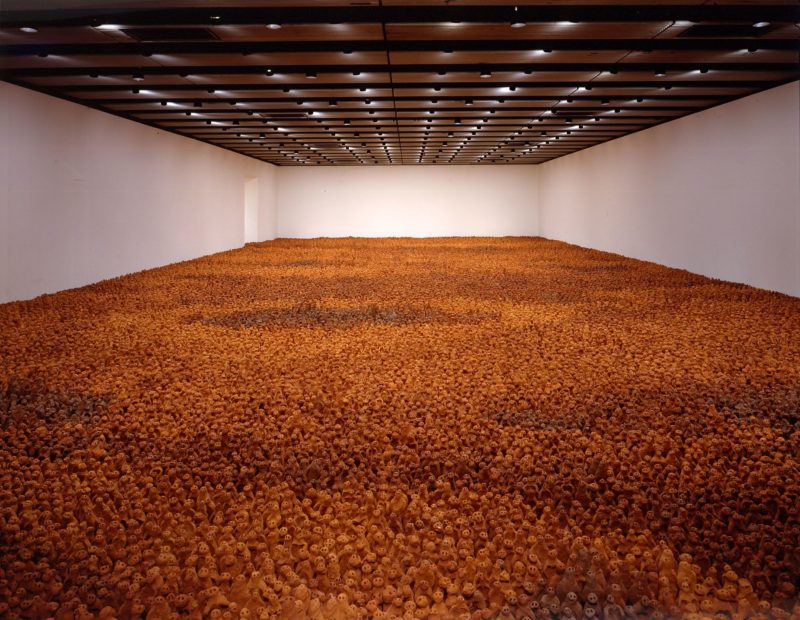
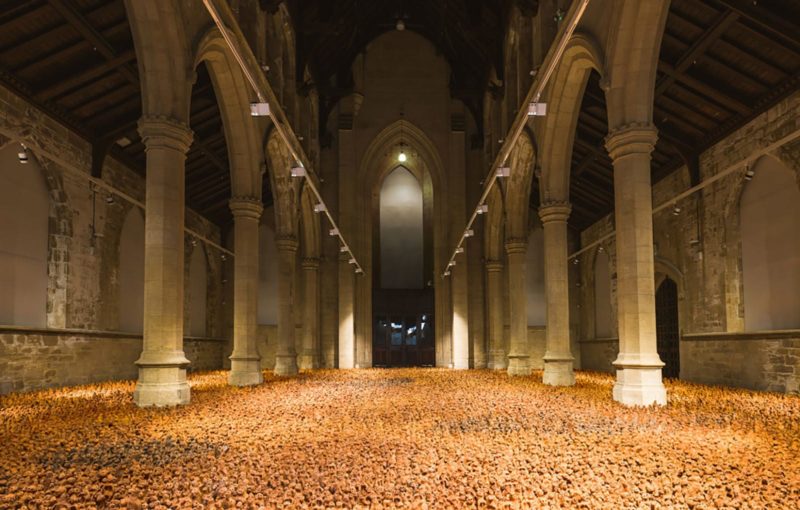
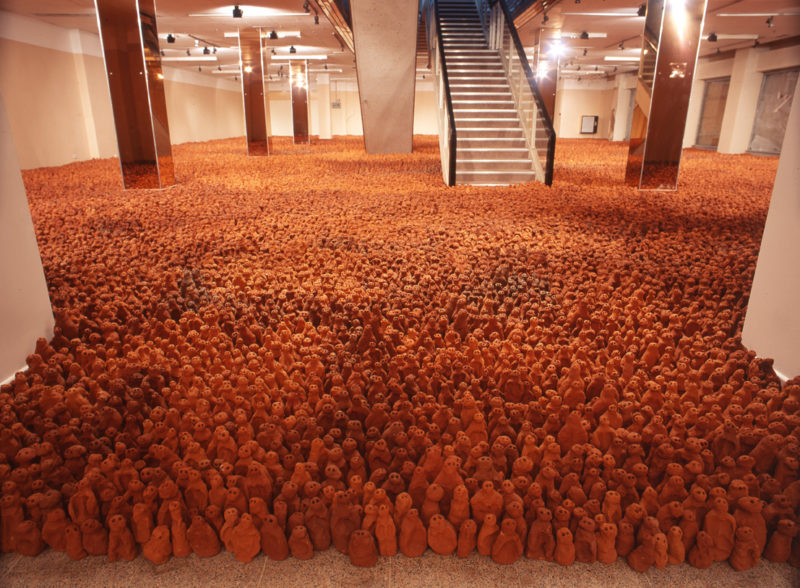
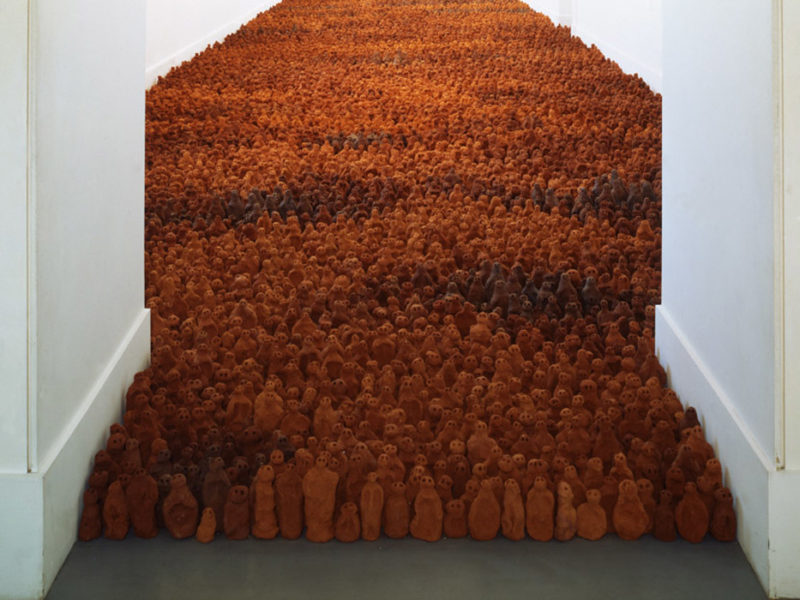
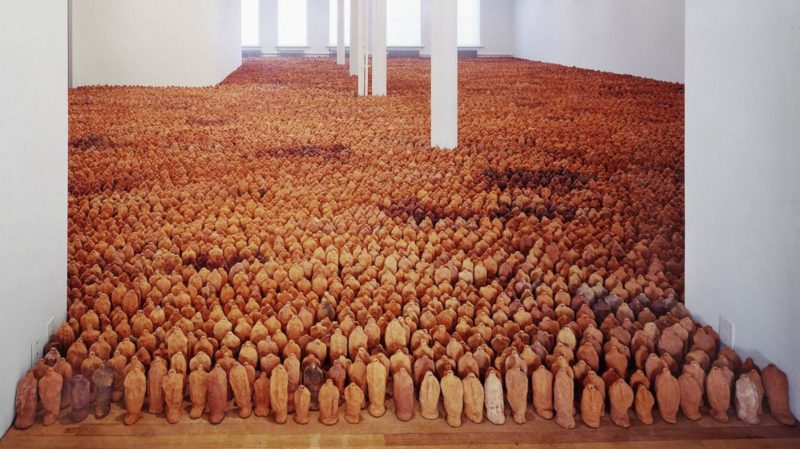
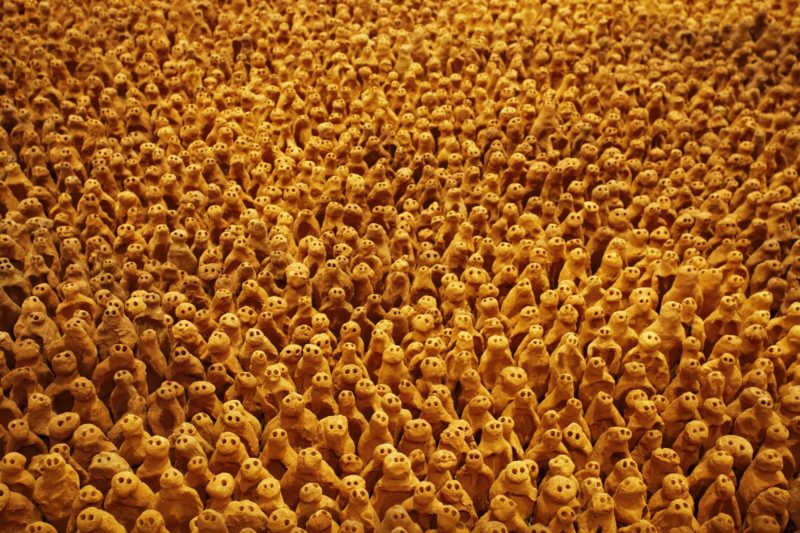
Video: Making of
Asian Field, 2003
This version of Field comprises 210,000 hand-sized clay pieces made by some 350 people under the artist’s supervision. The 350 people were of all ages from the Xiangshan village in the northeast of the city of Guangzhou in south China.
The clay used in making the pieces came from Guangdong Province, which is known across China for its rich red coloring clay soil. The creation of the figures took five days between 18 and 22 January 2003. The pieces were then fired in the kilns in the nearby brick factory before the exhibition in Chongqing in 2003 and 2004. The installation required 2000 square meters of space. The piece was exhibited in several non-art venues across four cities.
